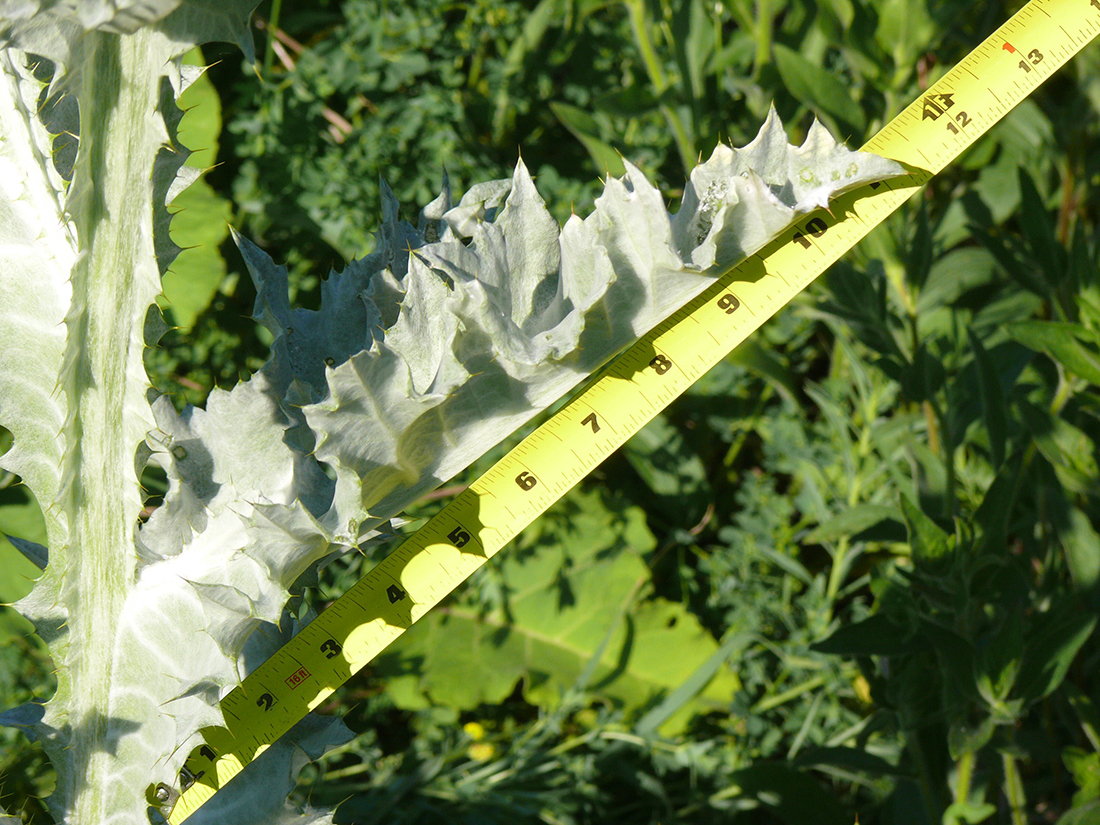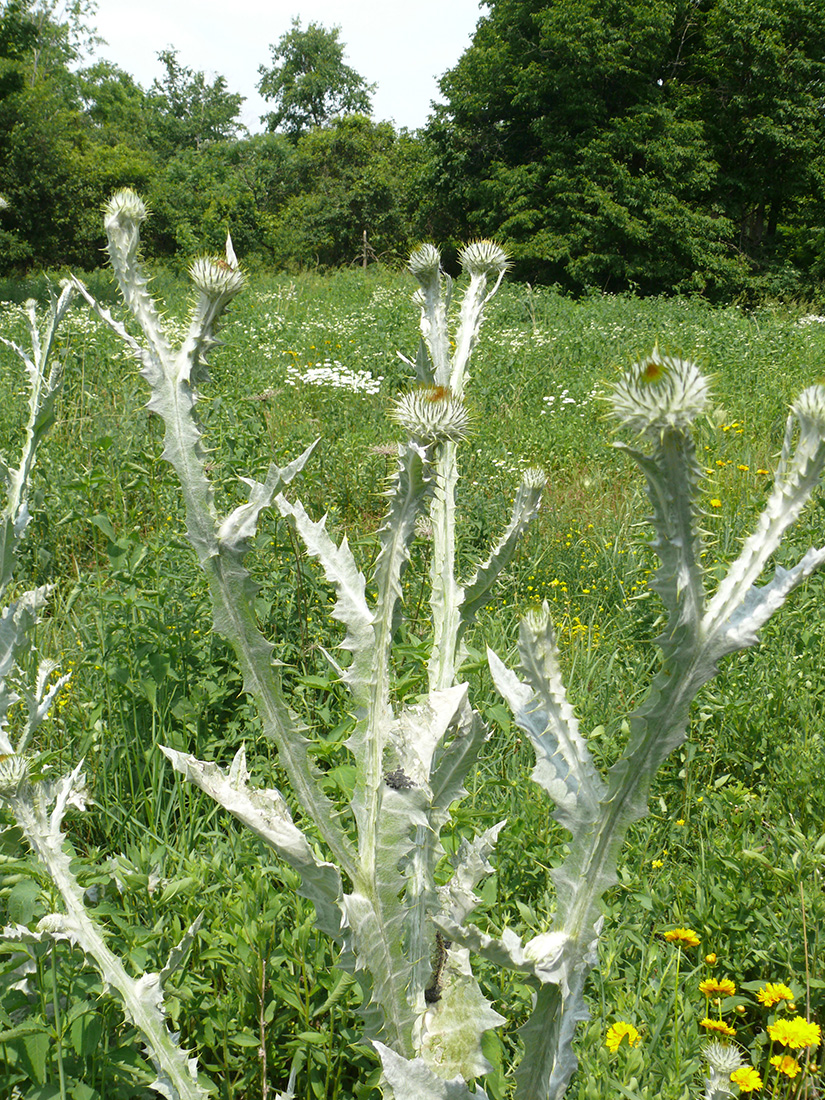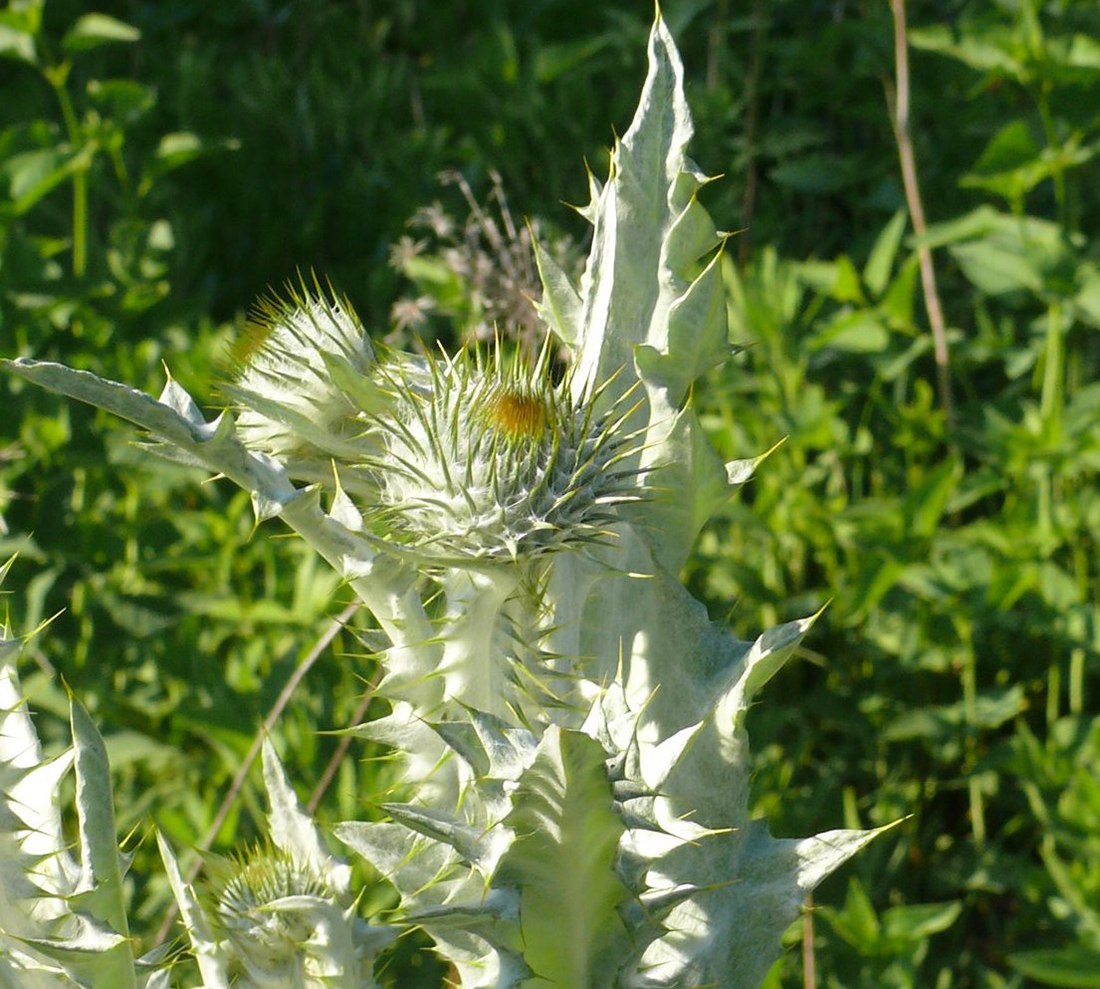Scotch Thistle
- Composite or aster (Asteraceae family):
- Onopordum acanthium L.
- EPPO code:
- ONRAC
- Other names:
- White thistle, cotton thistle
Species information
- Lifecycle:
- Biennial, sometimes annual.
- Propagation:
- Reproduces by wind-dispersed seed.
- Emergence:
- Scotch thistle seed germinates in the spring and late summer.
- Habitat:
- The weed is found primarily in pastures, roadsides and waste places. It is rarely found in cultivated crops.
- Competitiveness:
- Scotch thistle reduces productivity in pastures as livestock avoid it.
Identification clues
Seedling
- Cotyledons:
- Orbicular (round) to oval with whitish veins, tapering into a stalk, approximately 30 mm long.
- Young leaves:
- Its first leaves are lanceolate, white and woolly, lobed or coarsely toothed, and have spiny margins.
- Mature leaves:
- The mature leaves are similar to the rosette (first) leaves; however, they are smaller and alternately oriented on the stem.
Mature plant
- Stems:
- Erect, tall (1–2 m), white and woolly with broad and spiny wings.
- Flowers:
- The inflorescences are similar to those of bull thistle, but the spiny region below the purple florets is white and wooly.
- Seeds:
- The seed, which is light brownish-gray, is 5 mm long and attached to a white feathery pappus, often referred to as “fluff.”
- Roots:
- Thick, long and fleshy taproot.
Note of interest
Humans have utilized the plant in many ways, both as food and for medicinal purposes.
Often mistaken for
I know it's not Bull thistle because the leaves and stem of Scotch thistle have a white and wooly appearance, while bull thistle has dark green leaves and a dark green stem.





Updated: January 13, 2023
Published: January 13, 2023